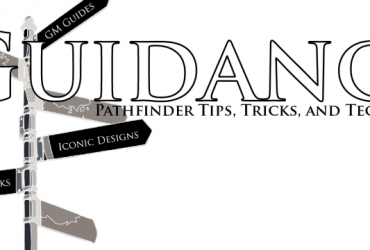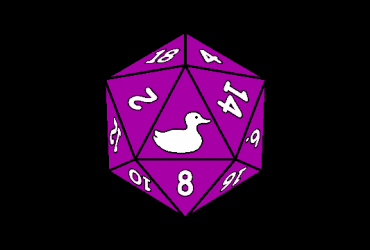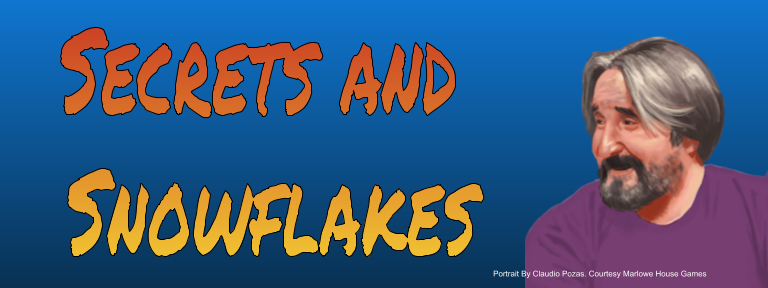Two weeks ago I introduced you to two of the most fearsome villains any of my characters have had to face and talked about the importance of a villain’s backstory. This week I’d like to discuss the purpose of memorable RPG villains. Villains can elicit a range of emotions from your PCs: grief, hatred, rage, grudging respect, even outright fear. Villains can inspire PCs to action even to heroic sacrifice. But ultimately, the real purpose of a villain is to be defeated.
I bring this up early in this discussion because it is an often overlooked piece of advice. Once you have put in long hours creating a memorable villain and allowed them some “on-screen” time in your campaign it can become very tempting to give your villain an unrealistic advantage in every situation. You need to be okay with each scene you include your villain in possibly being their last.
You can mitigate this some by giving the villain some advantages. In the 3.5 era, AP Shackled City the PCs meet one of the campaign’s ongoing villains in the first chapter. The NPC in question is a beholder and clearly, outclasses the 1st level party. Since the PCs are of no consequence to him at this stage he doesn’t run much risk of dying prematurely and only truly foolish PCs would push it against such a clearly overpowering threat. It is possible if your villain is monstrous to use a similar tactic in your campaign but it can be tricky to run it in a way that doesn’t also run the risk of an instant TPK if your players assume you won’t put anything in the adventure they can’t kill.
Maybe your campaign’s villain is a dragon harassing a small kingdom. You could have the PCs on hand as it issues its ultimatums for tribute: treasure, horses and the first-born sons and daughters who will be its slaves. Emphasize the massive size of the dragon and magnitude of the fear it projects and hopefully, your 1st level heroes will be intimidated out of doing anything too foolish. Later to reinforce the threat of the villainous dragon have it fly overhead. The thunderous sound of flapping wings and a looming shadow creating an immediate reminder of the villain lurking in the PCs future.
For more mundane threats and particularly those closer to an appropriate CR for the PCs you should give your villains an escape plan for most of their encounters, something logical such as a screen of mooks, a magical escape such as an invisibility spell or teleport, or even just a secret door. These are all tricks that your villain can and should employ but at some point, they’ll fail and the PC’s will take out your villain. Even if it happens before you expect, it’s okay, because the PCs got to be heroes.
The real trick to memorable villains is making the PCs want to take the villain down. No more than “want” to take out the villain, to viscerally need to take out the villain.
Rule 1. Make It Personal!
You can craft a great recurring antagonist but if you want your players to love to hate them in a way that elevates them to a true villain you need to really provoke your characters. A surefire way to accomplish this is to make it personal.
Darth Vader was Luke’s Father. President Snow came into Katniss’s home and threatened her family and her friends. Kahn killed Kirk’s son. We see it in countless novels and movies the great villains have a close personal connection to one or more of the heroes whether by blood, by whom they threaten, or whom they hurt.
If you were using the villainous dragon from above, maybe the dragon’s ultimatum resulted in a PC losing her brother when he is taken to be a slave. Perhaps another PC’s family farm loses its only horse and all of his family now face starvation because they have no animal to pull a plow or bring the cart of goods to market. Now both of these PCs are vested in defeating the villain.
In another campaign the PCs may be tracking an unknown killer through a prolonged investigation. If the killer targets a favorite NPC ally the PCs who were invested in the mission may find their anger rising especially if the killer leaves a taunting note that indicates this victim was selected “because they just won’t let go of the case” and hints next time the victim will be someone even more dear to them.
When Chris ran Planescape we didn’t always know Diario was our story’s villain. We knew he was a frequent antagonist, sometimes questionable ally who often leveraged his relationship to our companion to get us to work for him, but it wasn’t until he skewered his brother nearly killing the PC and leaving him for the rest of the party to find did we discover he was our villain. That discovery shook the campaign and made us question just what we’d been doing…and we hated Diario for all of it.
So as you make your next villain remember his purpose is to be defeated and give your PCs a really personal need to defeat them.






